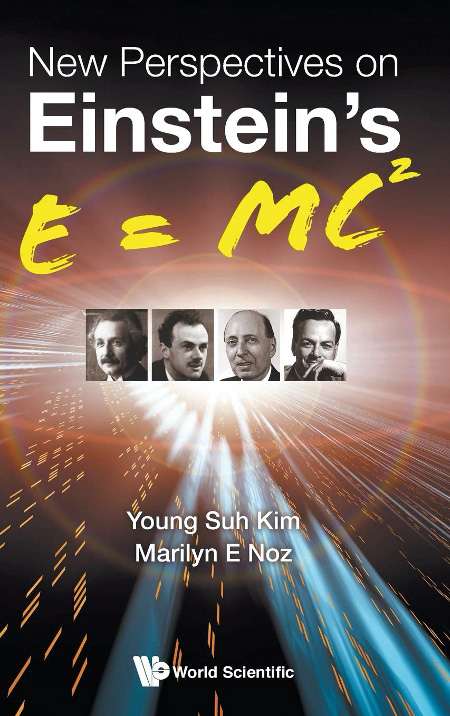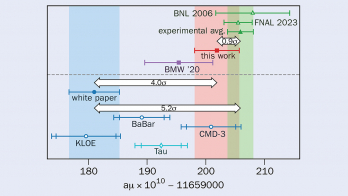By Young Suh Kim and Marilyn E Noz, World Scientific

New Perspectives on Einstein’s E = mc2 mixes historical notes with theoretical aspects of the Lorentz group that impact relativity and quantum mechanics. The title is a little perplexing, however, as one can hardly expect nowadays to discover new perspectives on an equation such as E = mc2. The book’s true aim is to convey to a broader audience the formal work done by the authors on group theory. Therefore, a better-suited title may have been “Group theoretical perspectives on relativity”, or even, more poetically, “When Wigner met Einstein”.
The first third of the book is an essay on Einstein’s life, with historical notes on topics discussed in the subsequent chapters, which are more mathematical and draw heavily on publications by the authors – a well-established writing team who have co-authored many papers relating to group theory. The initial part is easy to read and includes entertaining stories, such as Einstein’s mistakes when filing his US tax declaration. Einstein, according to this story, was calculating his taxes erroneously, but the US taxpayer agency was kind enough not to raise the issue. The reader has to be warned, however, that the authors, professors at the University of Maryland and New York University, have a tendency to make questionable statements about certain aspects of the development of physics that may not be backed up by the relevant literature, and may even contradict known facts. They have a repeated tendency to interpret the development of physical theories in terms of a Hegelian synthesis of a thesis and an antithesis, without any cited sources in support, which seems, in most cases, to be a somewhat arbitrary a posteriori assessment.
There is a sharp distinction in the style of the second part of the book, which requires training in physics or maths at advanced undergraduate level. These chapters begin with a discussion of the Lorentz group. The interest then quickly shifts to Wigner’s “little groups”, which are subgroups of the Lorentz group with the property of leaving the momentum of a system invariant. Armed with this mathematical machinery, the authors proceed to Dirac spinors and give a Lorentz-invariant formulation of the harmonic oscillator that is eventually applied to the parton model. The last chapter is devoted to a short discussion on optical applications of the concepts advanced previously. Unfortunately, the book finishes abruptly at this point, without a much-needed final chapter to summarise the material and discuss future work, which, the previous chapters imply, should be plentiful.
Young Suh Kim and Marilyn Noz’s book may struggle to find its audience. The contrast between the lay and expert parts of this short book, and the very specialised topics it explores, do not make it suitable for a university course, though sections could be incorporated as additional material. It may well serve, however, as an interesting pastime for mathematically inclined audiences who will certainly appreciate the formalism and clarity of the presentation of the mathematics.








